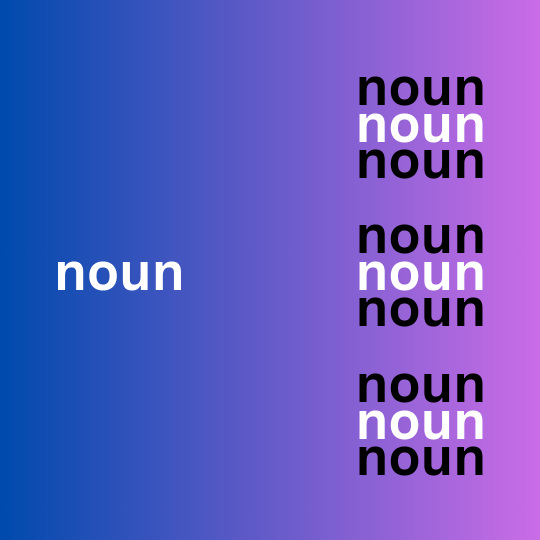Hi there, Filipino Writer, welcome to an introduction to nouns focusing on singular and plural nouns.
Disclaimer: I am not a teacher nor do I have a degree related to Teaching or an English Major. What you get here are lessons I’ve learned throughout the years from my personal formal education, personal research on the subject, and from the Internet. This is not meant to replace formal education on the subject.
Okay, now that we have that out of the way, here’s an introduction to nouns focusing on singular and plural nouns that I hope will help you in your journey as a writer.
Introduction to Nouns
What is a Noun?
A noun is a word that names a person, place, thing, or idea. Nouns are an essential part of language and are used in almost every sentence we speak or write.
Types of Nouns
- People: Words that name individuals or groups of people.
- Examples: teacher, doctor, family, team
- Places: Words that name locations or areas.
- Examples: park, school, city, country
- Things: Words that name objects or animals.
- Examples: book, car, dog, tree
- Ideas: Words that name concepts or feelings.
- Examples: love, happiness, freedom, peace
Examples in Sentences
- The teacher (person) gave a lesson in the classroom (place).
- My dog (thing) likes to play in the park (place).
- Kindness (idea) is important for building friendships (idea).
Fun Fact
Nouns can be used as the subject or object in a sentence. For example:
- The cat (subject) chased the mouse (object).
Wait, Aren’t There More Than Just Singular and Plural Nouns?
We are focusing on common nouns as of now and the singular and plural forms of these common nouns.
We will be discussing further down the line the other types of nouns including proper, concrete, abstract, collective, compound, count, and mass nouns.
We may touch on some of the other types of nouns in this article but we will only discuss the singular and plural form of common nouns for now to reduce the risk of confusion.
Singular and Plural Nouns

Singular and plural nouns differ in the number of items they represent:
Singular nouns:
- Refer to one person, place, thing, or idea
- Examples: dog, book, city, child
Plural nouns:
- Refer to more than one person, place, thing, or idea
- Examples: dogs, books, cities, children
The Main Differences Between Singular and Plural Nouns are:
There are three main differences that I can think of between singular and plural nouns.
Quantity – Singular is one, plural is more than one.
Form – Plural nouns often have a different form from their singular counterparts.
Usage – They affect verb agreement in sentences.
Here are some ways nouns change from singular to plural:
- Add -s: cat → cats, house → houses
- Add -es: box → boxes, church → churches
- Change -y to -ies: city → cities, baby → babies
- Irregular forms: child → children, mouse → mice
Rules for Forming Plurals in English
1. Regular Plurals
a) Add -s
For most nouns, simply add -s to the end.
- Examples:
- dog → dogs
- book → books
- tree → trees
b) Add -es
For nouns ending in s, x, z, ch, sh, or o, add -es.
- Examples:
- class → classes
- box → boxes
- buzz → buzzes
- church → churches
- dish → dishes
- potato → potatoes
c) Nouns ending in -y
- If -y follows a consonant, change y to i and add -es:
- city → cities
- baby → babies
- If -y follows a vowel, just add -s:
- toy → toys
- day → days
d) Nouns ending in -f or -fe
- Some nouns change f to v and add -es:
- leaf → leaves
- knife → knives
- Others simply add -s:
- roof → roofs
- cliff → cliffs
2. Irregular Plurals
a) Internal vowel change
Some nouns change their internal vowels:
- man → men
- woman → women
- tooth → teeth
- foot → feet
- mouse → mice
b) -en ending
A few nouns add -en:
- ox → oxen
- child → children
c) Same form for singular and plural
Some nouns don’t change:
- sheep → sheep
- deer → deer
- fish → fish (also fishes, in some contexts)
- species → species
d) Foreign origin plurals
Some keep their original language plurals:
- criterion → criteria
- phenomenon → phenomena
- cactus → cacti (or cactuses)
3. Compound Nouns
a) Noun + Noun
Pluralize the principal noun:
- mother-in-law → mothers-in-law
b) Noun + of + Noun
Pluralize the first noun:
- cup of coffee → cups of coffee
4. Letters, Numbers, and Symbols
Add ‘s:
- Mind your p’s and q’s.
- She got all A’s on her report card.
- The 1990’s were a great decade for music.
Conclusion
Remember: There are always exceptions to these rules, and some words have multiple accepted plural forms. When in doubt, it’s best to consult a dictionary.
Activity: Noun Hunt
Here’s a fun activity you can try. Look around your room and try to identify:
- 5 nouns that are people
- 5 nouns that are places
- 5 nouns that are things
- 5 nouns that are ideas
Remember, nouns are everywhere! They help us name and describe the world around us.
Oh and if you want, here’s a quiz you can try.

1 thought on “An Introduction to Nouns Focusing on Singular and Plural Nouns”